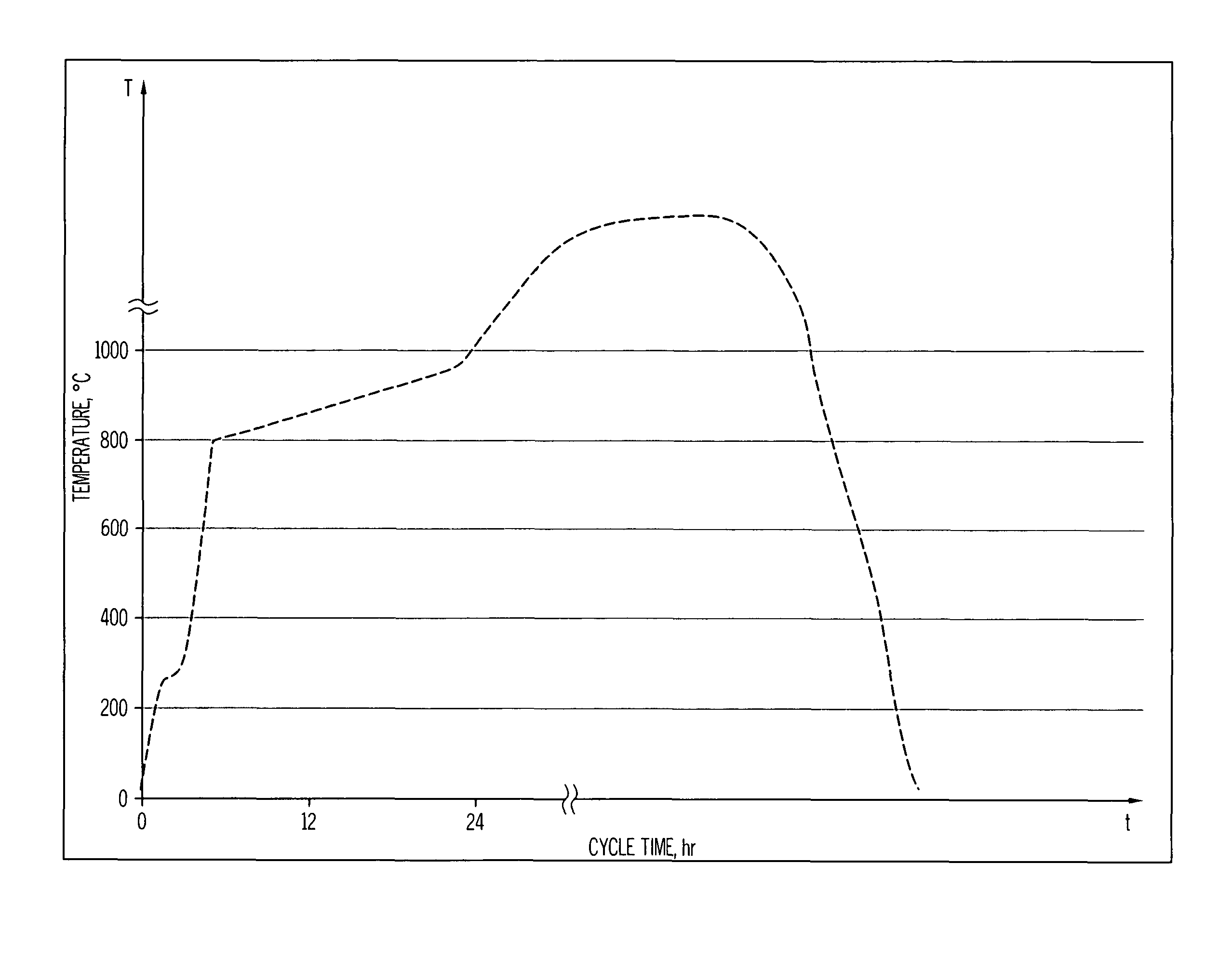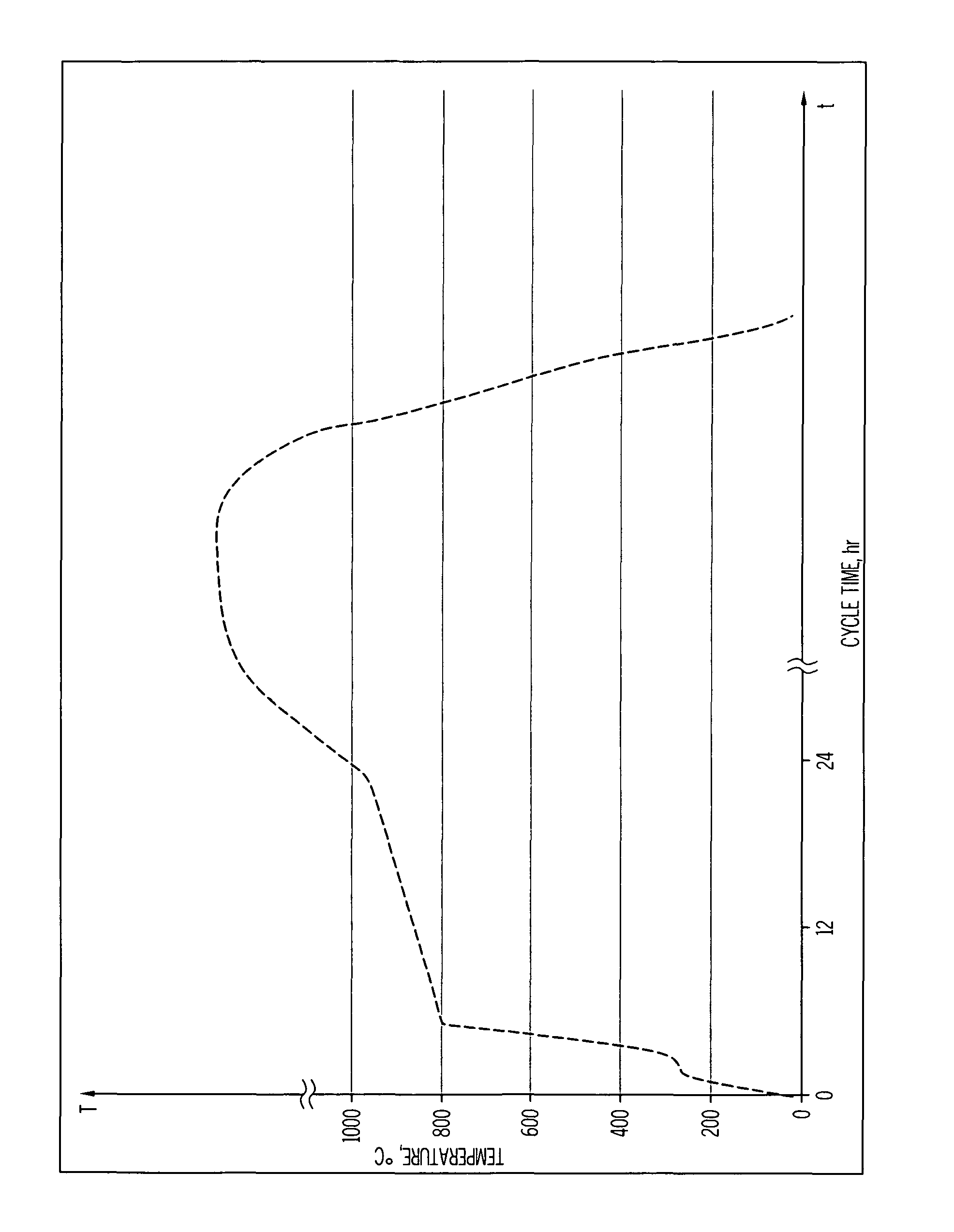Fast firing method for high porosity ceramics
a high porosity ceramic and fast firing technology, applied in ceramics, hollow wall objects, other domestic objects, etc., can solve the problems of prolonged firing cycle and may take 140 hours to 198 hours
- Summary
- Abstract
- Description
- Claims
- Application Information
AI Technical Summary
Benefits of technology
Problems solved by technology
Method used
Image
Examples
examples
[0055]Embodiments will be further clarified by the following examples.
examples 1-16
[0056]In the examples below, cylindrical honeycomb ceramic bodies having diameters and lengths indicated in Table 1 below were heated in a kiln at heating rates indicated in Table 1. Further, the amount of oxygen used in each stage and the amount of pore formers used is listed in Table 1. Each of Examples 1-5 was formed with aluminum containing raw materials that did not include a magnesium-containing material. Examples 6-16 were formed with aluminum containing raw materials that included talc, a magnesium-containing material. The honeycomb ceramic bodies were using aluminum titanate compositions as described in U.S. Pat. No. 7,976,768 issued on Jul. 12, 2011, which is incorporated herein by reference in its entirety.
[0057]
TABLE 1Heating RateOxygen Level (%)FirstThirdFirstThirdRT-FirstTemp-SecondTempTempFirstTempPartTempTempandandTemp-SecondandPorosityStarchGraphiteEx(° C. / hr)(° C. / hr)AboveBelowTempAboveSize(%)(%)(%)1RT-100° C.:350° C.-800° C.:800° C.-1000° C.:8Ramp from136.5″× 6.5″...
PUM
| Property | Measurement | Unit |
|---|---|---|
| temperature | aaaaa | aaaaa |
| temperature | aaaaa | aaaaa |
| temperature | aaaaa | aaaaa |
Abstract
Description
Claims
Application Information
 Login to View More
Login to View More - R&D
- Intellectual Property
- Life Sciences
- Materials
- Tech Scout
- Unparalleled Data Quality
- Higher Quality Content
- 60% Fewer Hallucinations
Browse by: Latest US Patents, China's latest patents, Technical Efficacy Thesaurus, Application Domain, Technology Topic, Popular Technical Reports.
© 2025 PatSnap. All rights reserved.Legal|Privacy policy|Modern Slavery Act Transparency Statement|Sitemap|About US| Contact US: help@patsnap.com



